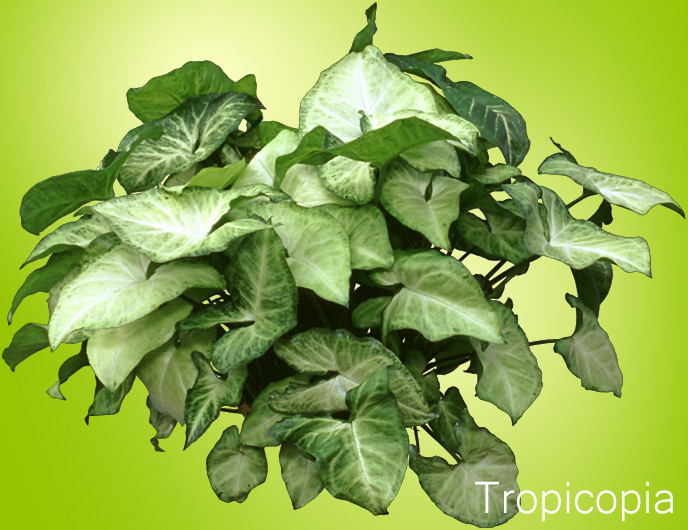





Arrowhead Plants, Syngonium, or Nepthytis, whichever name you choose, make excellent indoor plants. Originally grown as a solid green plant, Arrowhead Houseplants, close relatives of the Philodendron, now have leaves that are almost white, green & white, and various shades of pink or burgundy. No matter the color, the leaf of any arrowhead variety will always have an arrow shape. Keep the long runners and growth tips pruned on Arrowhead Plants and you can use them on tables or stand them on the floor. When left untrimmed, Arrowhead Houseplants make beautiful hanging plants.
These plants are considered poisonousPlants are a great addition to homes and offices, but it’s important to know whether your plants are dangerous to children, pets, or even adults. Some plants contain chemicals such as oxalates, solanine, glycosides, or alkaloid lycorine that may cause vomiting, nausea, diarrhea, swelling and redness of the mouth, throat, and lips, and trouble breathing. Touching parts of certain plants, especially the sap, may cause various skin irritations. The weight and age of the human or pet involved, and the part and amount of plant eaten determine how severe the reaction to the toxins will be. Although plants may be listed as non-toxic, they can still cause individual allergic reactions. If there is any question after a houseplant has been ingested or touched immediately call the Poison Control Center 1-800-222-1222 The Handbook of Poisonous and Injurious Plants [Paperback]is an excellent reference to keep around if you have young children and pets. and should be kept away from pets and children. Read more about common houseplants that are poisonousPlants are a great addition to homes and offices, but it’s important to know whether your plants are dangerous to children, pets, or even adults. Some plants contain chemicals such as oxalates, solanine, glycosides, or alkaloid lycorine that may cause vomiting, nausea, diarrhea, swelling and redness of the mouth, throat, and lips, and trouble breathing. Touching parts of certain plants, especially the sap, may cause various skin irritations. The weight and age of the human or pet involved, and the part and amount of plant eaten determine how severe the reaction to the toxins will be. Although plants may be listed as non-toxic, they can still cause individual allergic reactions. If there is any question after a houseplant has been ingested or touched immediately call the Poison Control Center 1-800-222-1222 The Handbook of Poisonous and Injurious Plants [Paperback]is an excellent reference to keep around if you have young children and pets. in
Don’t Feed Me To Your Cat! A Guide to Poisonous Houseplants

Copyright © www.100flowers.win Botanic Garden All Rights Reserved